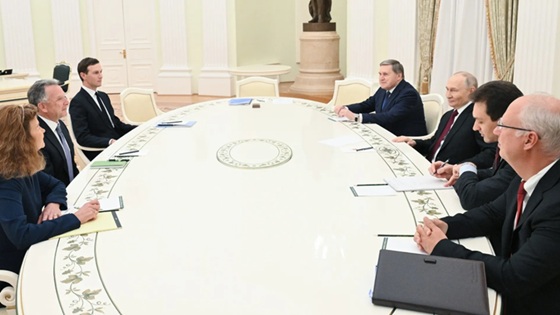A Tweet That Shook the World
Before meeting Chinese President Xi Jinping, U.S. President Donald Trump posted a short message on social media — written entirely in capital letters:
“THE G2 WILL BE CONVENING SHORTLY.”
That single phrase sent shockwaves through diplomatic and media circles. American commentators instantly decoded it as a reference to the world’s two largest economies — the United States and China — suggesting the rise of a new format, the G2, much like the G7 but with only two seats at the table.
Yet, behind this apparently casual remark lay a calculated signal. Trump was not merely talking economics; he was sketching a new map of global power — a return to a bipolar world, where only Washington and Beijing truly matter.
The Message Between the Lines
Trump’s statement did more than hint at economic cooperation. It sought to position China not as a rival to be contained but as an equal in the hierarchy of global power. By invoking the idea of “G2,” Trump appeared to accept the inevitability of China’s rise while simultaneously trying to frame it as a shared stage rather than a confrontation.
The timing and tone were deliberate. This was not a slip of the tongue; it was a message aimed at several audiences — Beijing, America’s allies, and perhaps most importantly, New Delhi.
India’s Discomfort with the G2 Narrative
In India, Trump’s post landed like a diplomatic jolt. For a nation eager to project itself as a rising superpower, the notion of a “G2” left no space for a “third.”
Indian analysts and media voices were quick to dismiss Trump’s remark as thoughtless or impulsive. Some accused him of flattering foreign leaders, others of destabilizing the delicate balance of international politics. Yet, beneath the criticism lay an unspoken anxiety: India had been sidelined in a world increasingly defined by U.S.–China competition.
While China built its power quietly — investing in technology, manufacturing, and global influence — India’s ambitions often outpaced its capabilities. It still relies on Europe and Russia for fighter jets, struggles under American tariffs, and depends heavily on the U.S. job market for its skilled workers. Despite Trump calling Prime Minister Narendra Modi a “great friend,” real policy breakthroughs remain scarce — and the unease, it seems, lies in New Delhi, not Washington.
Strategic Optics: From Seoul to Tokyo
Some observers found it odd that Trump invoked the “G2” concept while in South Korea, a nation still hosting U.S. troops. During that trip, he approved plans to assist Seoul in developing nuclear-powered submarines. Days later, in Japan, he addressed American soldiers alongside the country’s new prime minister.
But these gestures were hardly inconsistent. The U.S. continues to maintain a dense military network across Asia, even as it acknowledges China’s ascent. The competition remains intact, but so does the economic interdependence. For now, rivalry and cooperation coexist — a paradox that defines the 21st-century balance of power.
Regional Reactions: Anxiety and Assurance
While India’s media fretted over Trump’s tone, the rest of the region reacted with calm restraint. Even Taiwan, the player most directly exposed to Beijing’s ambitions, projected confidence. Its foreign minister noted that Taipei had “close contact and trust” with Washington and saw no reason for alarm.
Those who claim that Trump accepted China’s dominance overlook a crucial fact: the message came alongside a show of military resolve.
Power and Posturing: The Military Undercurrent
Just before the Trump–Xi meeting, the United States initiated two significant defense moves:
- The first U.S. nuclear exercises since 1992, signaling strategic readiness.
- Orders to U.S. forces in the South China Sea to conduct precision targeting drills using HIMARS (High Mobility Artillery Rocket Systems).
According to CNBC, the exercises were intended to demonstrate Washington’s unwillingness to yield space in the Indo-Pacific. The HIMARS — built by Lockheed Martin and famed for their accuracy in Iraq and Afghanistan — symbolized America’s determination to stay militarily relevant even as it spoke the language of cooperation.
Trade, Minerals, and Mutual Need
At the heart of the Trump–Xi dialogue was the long-running dispute over rare earth minerals, vital to advanced technology and defense industries. Trump announced that the issue had been resolved, with Beijing agreeing to ease export restrictions.
China’s Foreign Ministry confirmed that the two leaders reached “consensus on major economic and trade issues.” The ministry also revealed that Trump would visit China the following April, and Xi had been invited to the United States in return.
Meanwhile, the Chinese Ministry of Commerce suspended special port fees targeting U.S. naval ships — another gesture of détente.
A Recognition of Equals
The outcome was unmistakable: Washington had, perhaps reluctantly, acknowledged China as a true superpower. More importantly, it learned that Beijing cannot be coerced through pressure or intimidation.
The United States may browbeat allies like India or Canada into trade concessions, but with China, the rules are different — the only viable path is negotiation between equals.
Epilogue: A Tweet That Marked a Turning Point
When Trump later spoke to reporters aboard Air Force One, he called his meeting with Xi “excellent.” On a scale of zero to ten, he rated it a twelve.
Behind the bravado lay a simple truth: with one tweet, Trump had acknowledged a new world order — one in which the United States no longer stands alone, and the global stage has space for only two leading powers.
Discover more from Defence Talks | Defense News Hub, Military Updates, Security Insights
Subscribe to get the latest posts sent to your email.





